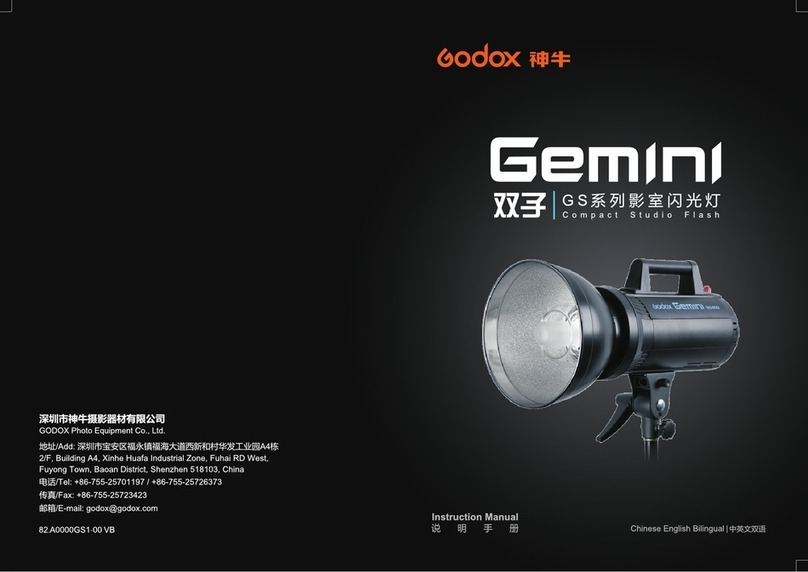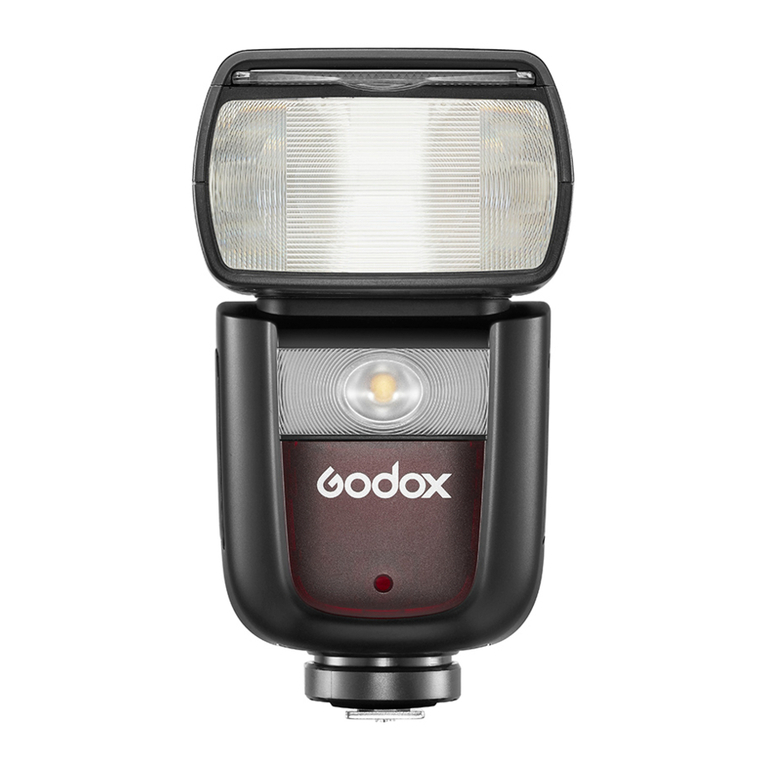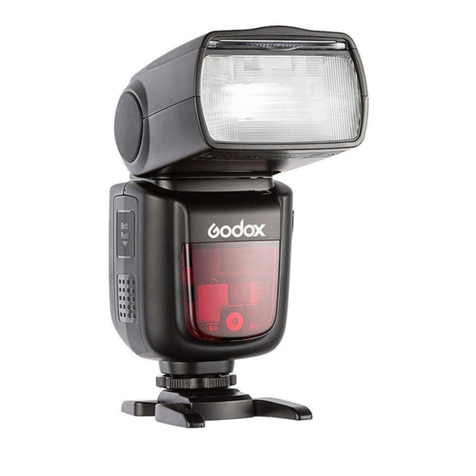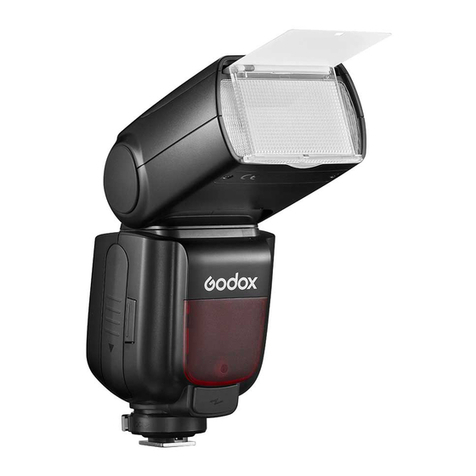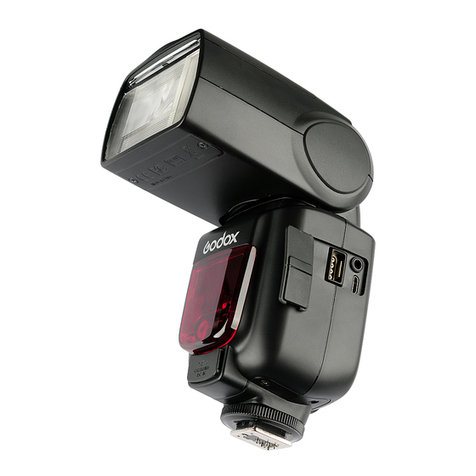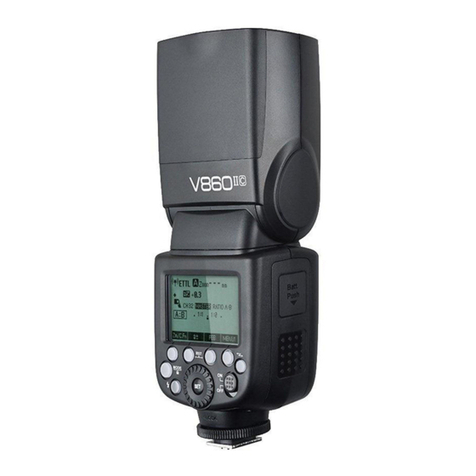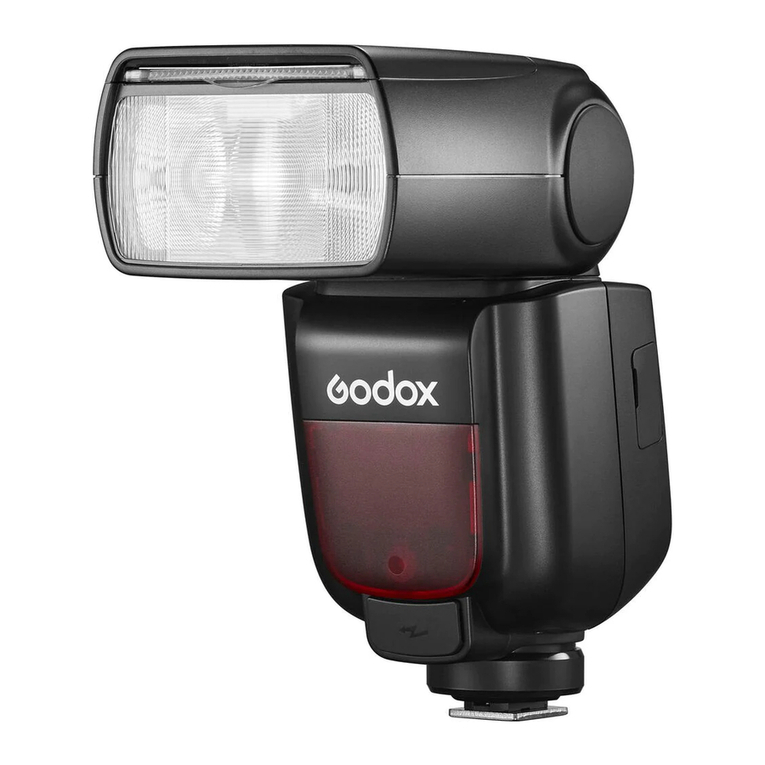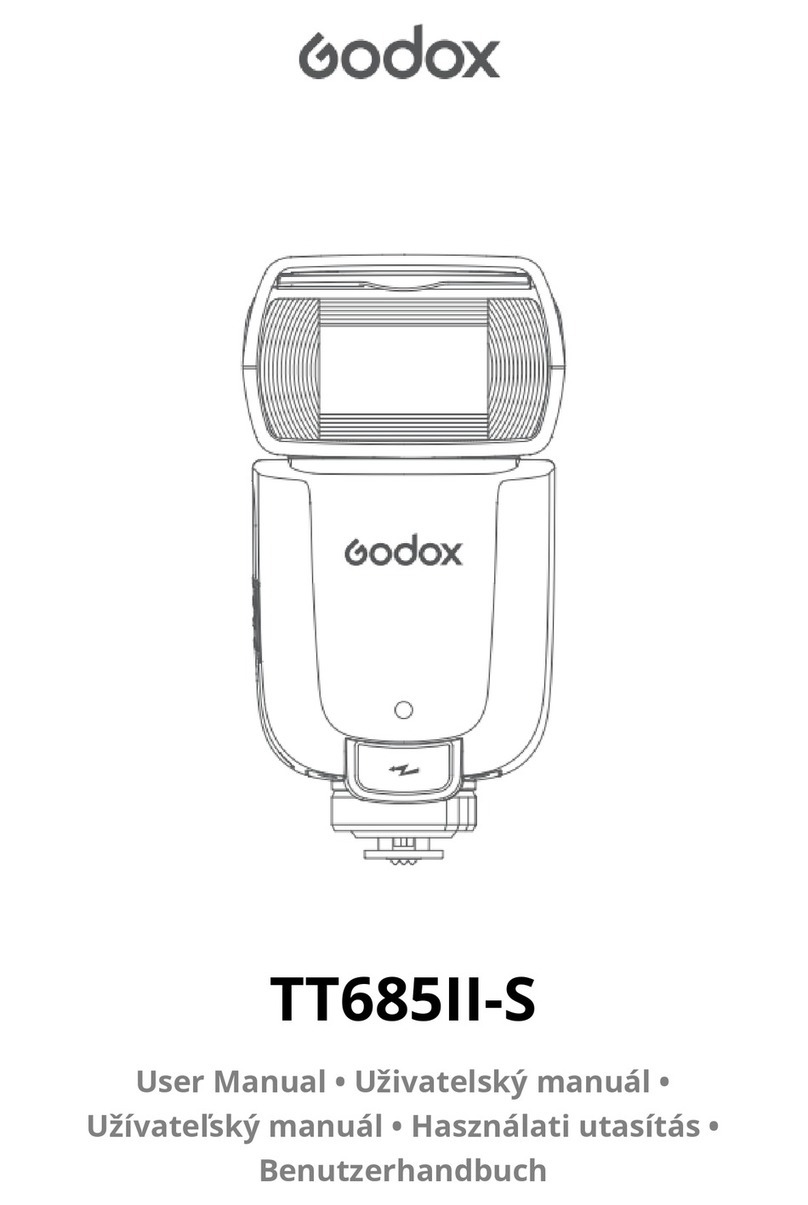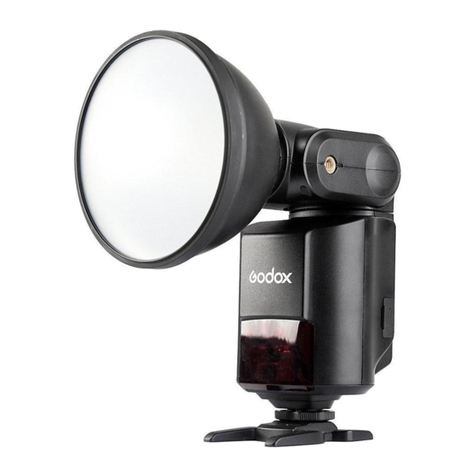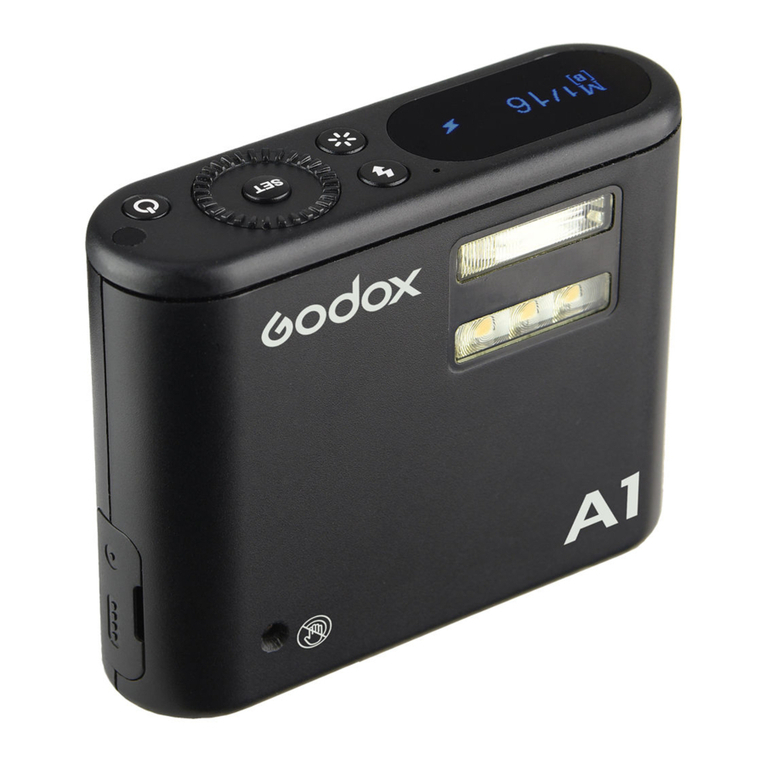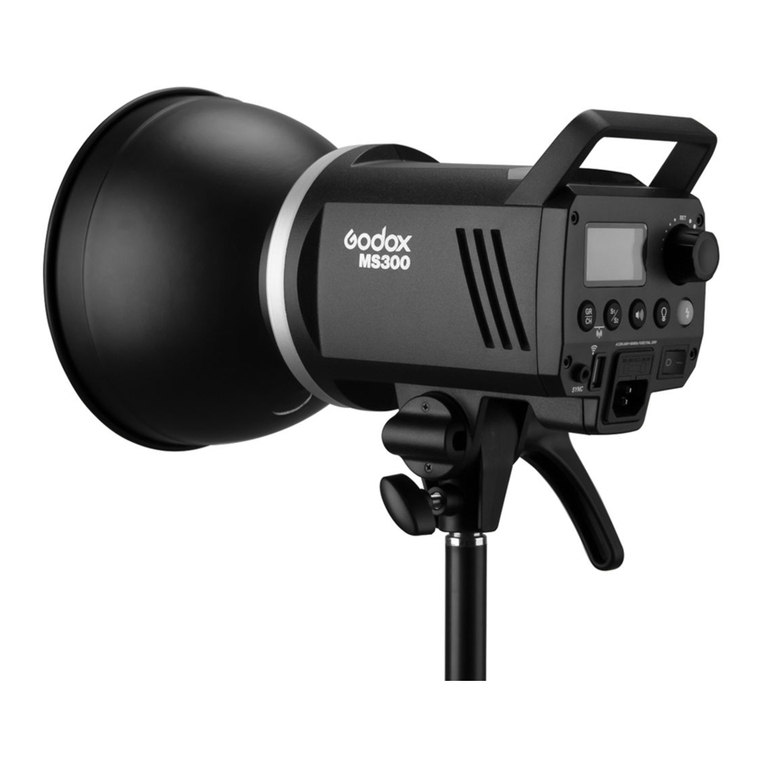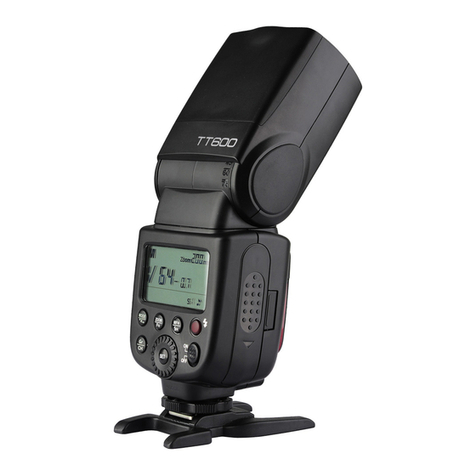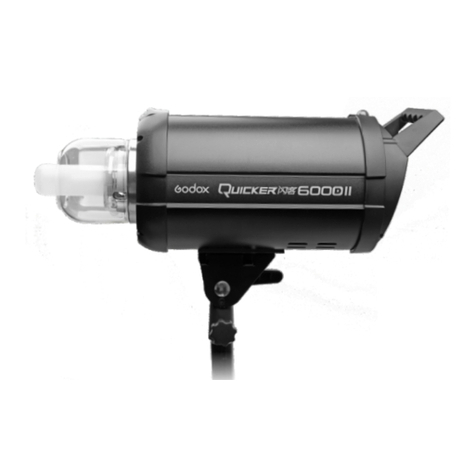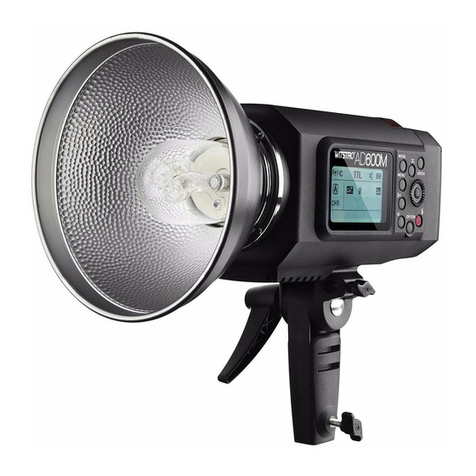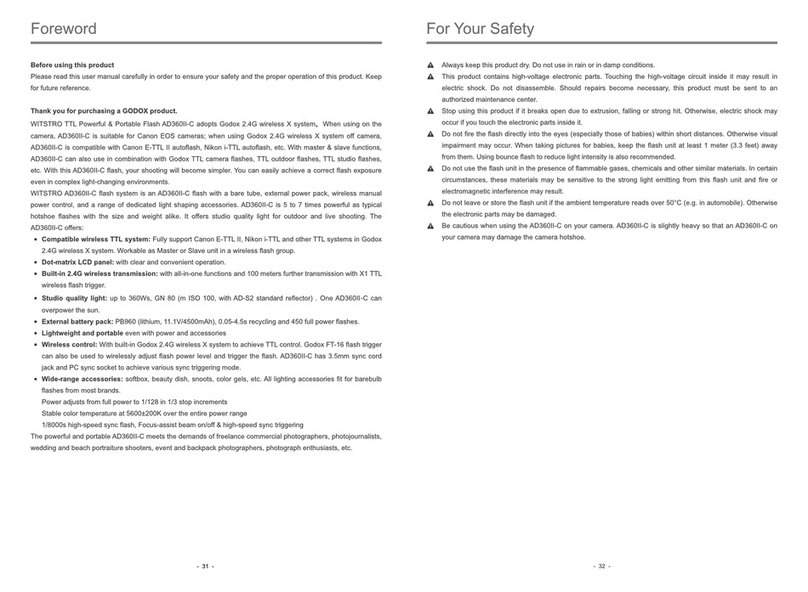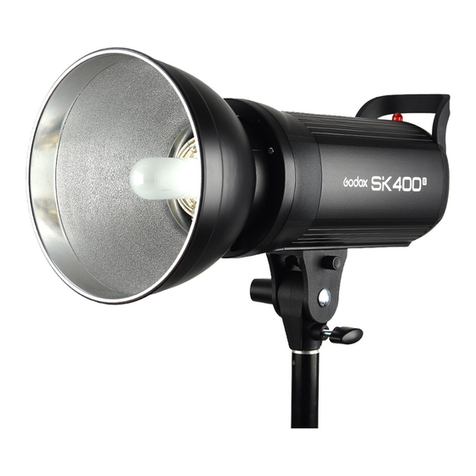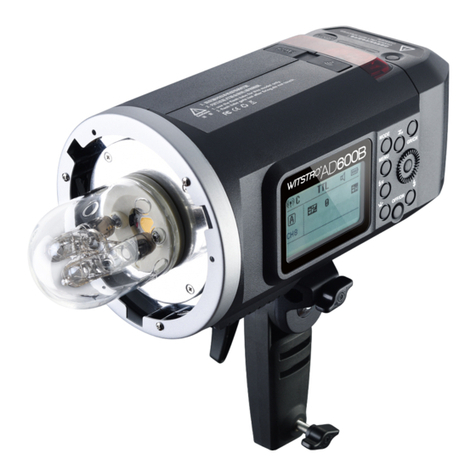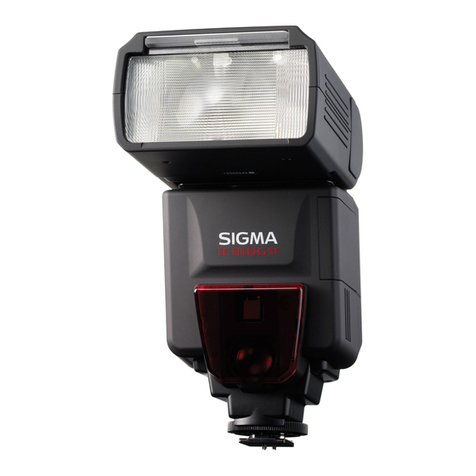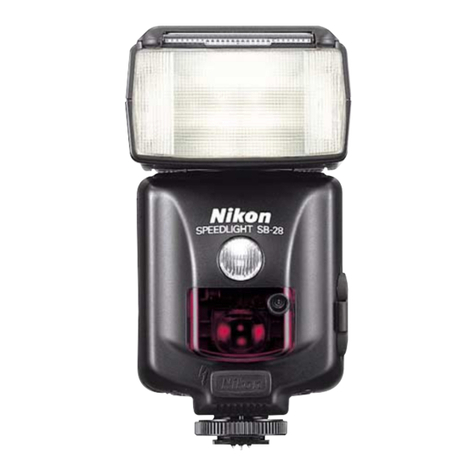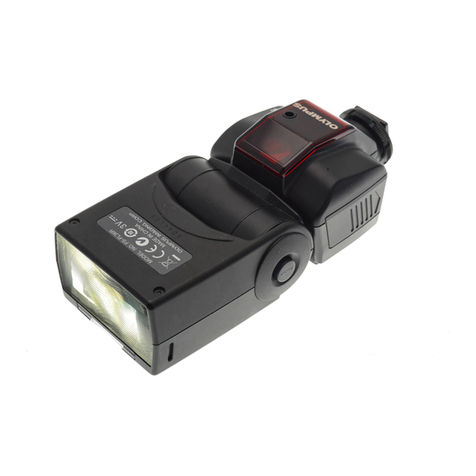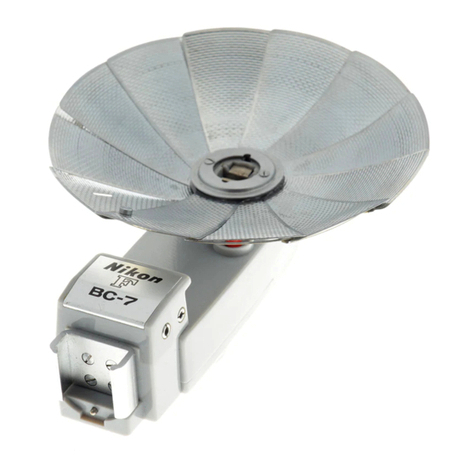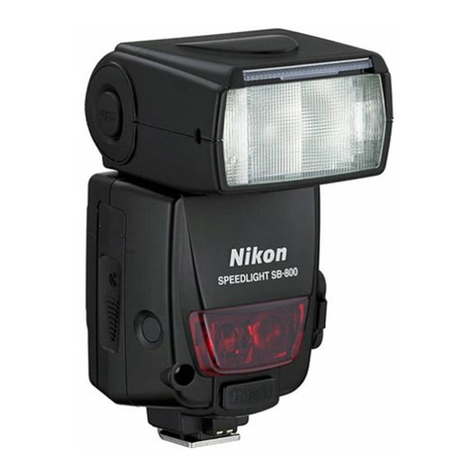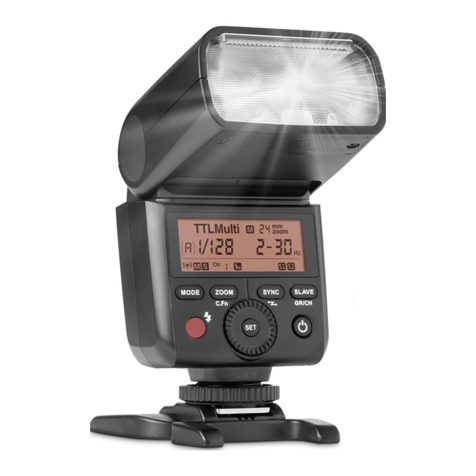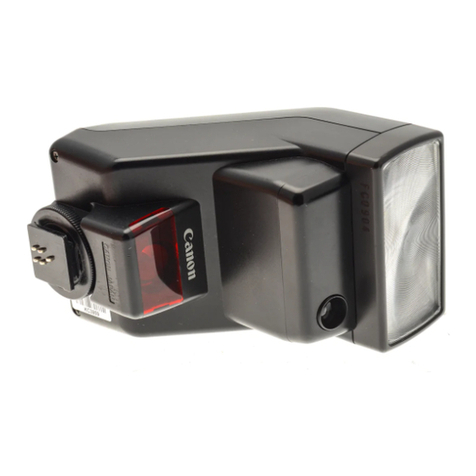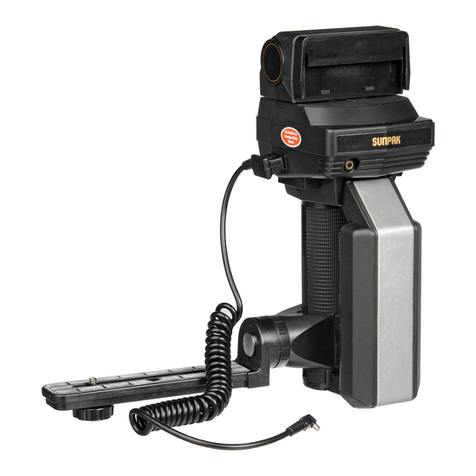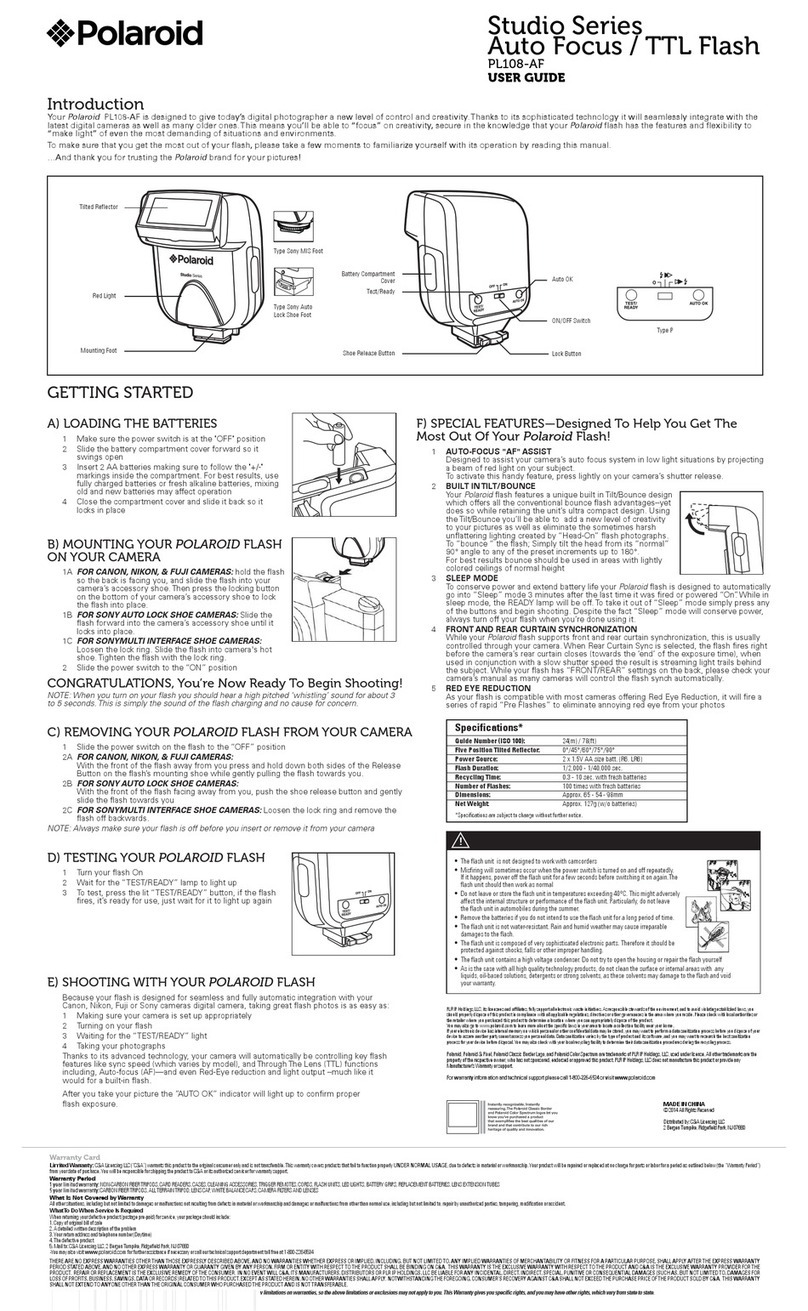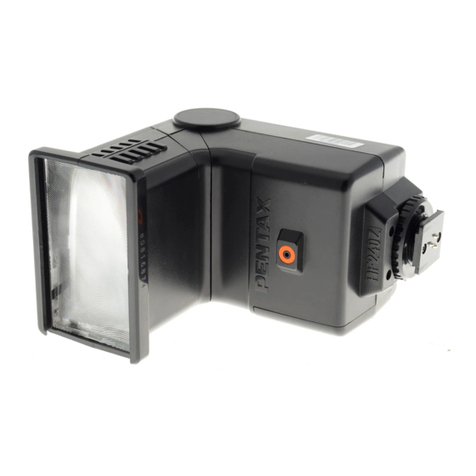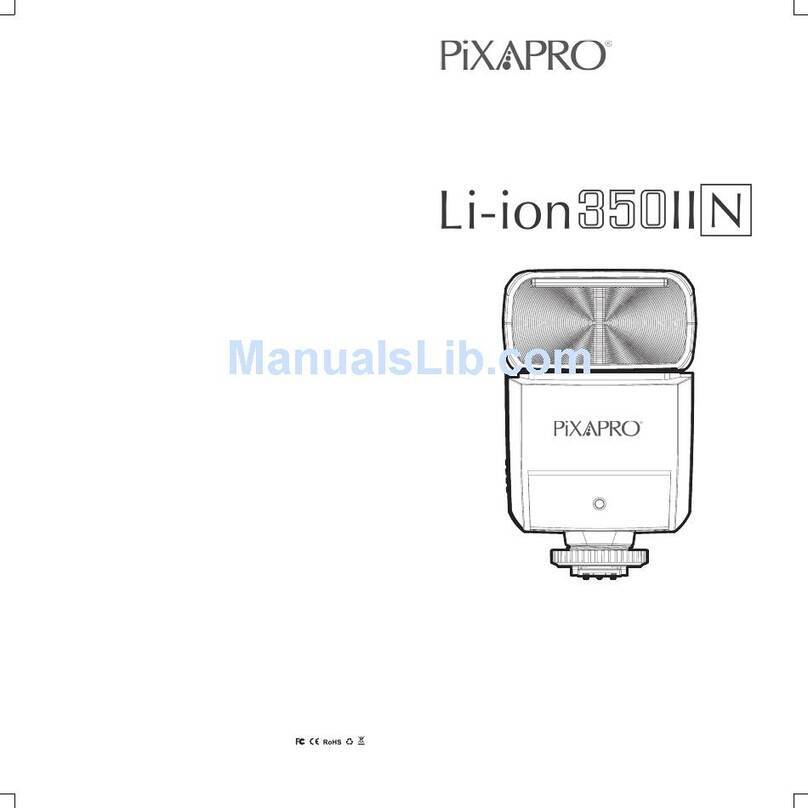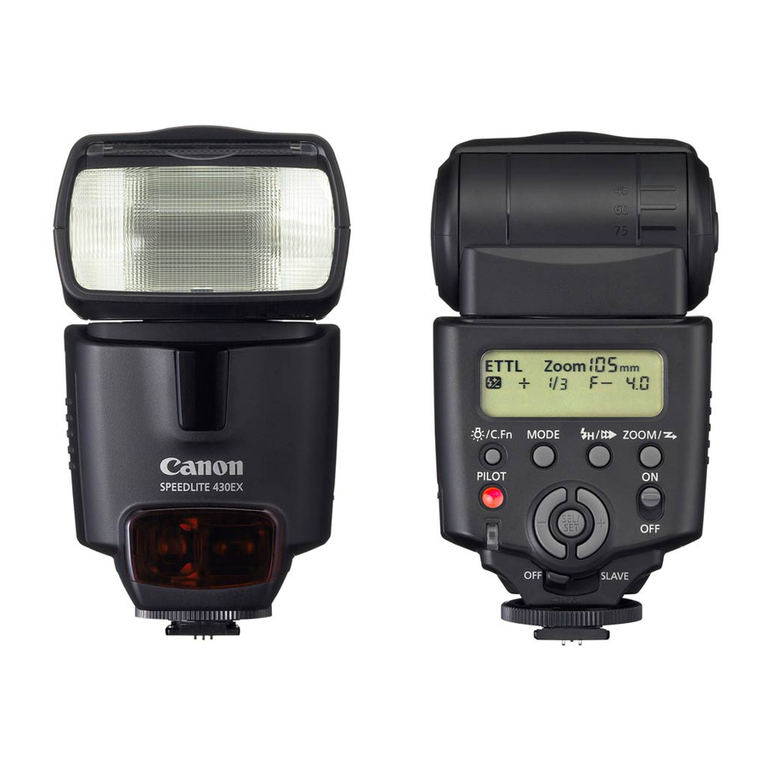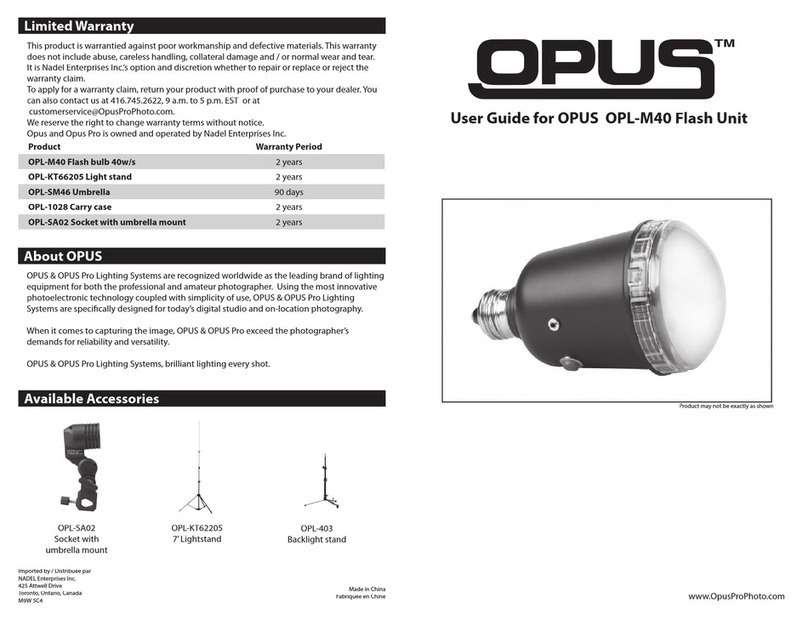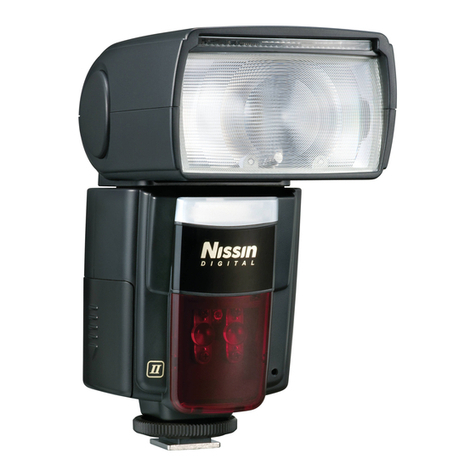- 22 -
Set the flash frequency and
3flash times.
● Press the SET Button to
select the flash frequency.
Turn the Select Dial to set
the number.
● Press the SET Button
again to select the flash
times. Turn the Select Dial
to set the number.
Multi: Stroboscopic Flash
With stroboscopic flash, a rapid series of flashes is fired. It can be
used to capture a multiple images of a moving subject in a single
photograph.
You can set the firing frequency (number of flashes per sec.
expressed as Hz), the number of flashes, and the flash output.
Long press the <MODE>
1button for 2 seconds so that
<Multi> is displayed.
Turn the Select Dial to choose
2a desired flash output.
Calculating the Shutter Speed
During stroboscopic flash, the shutter remains open until the firing
stops. Use the formula below to calculate the shutter speed and set
it with the camera.
For example, if the number of flashes is 10 and the firing frequency is
5 Hz, the shutter speed should be at least 2 seconds.
Number of Flashes / Flash Frequency = Shutter Speed
To avoid overheating and deteriorating the flash head, do not
use stroboscopic flash more than 10 times in succession.
After 10 times, allow the camera flash to rest for at least 15
minutes. If you try to use the stroboscopic flash more than 10
times in succession, the firing might stop automatically to
protect the flash head. If this happens, allow at least 15
minutes’ rest for the camera flash.
● Stroboscopic flash is most effective with a highly reflective
subject against a dark background.
● Using a tripod and a remote control is recommended.
● Stroboscopic flash can be used with“buLb”.
● If the number of flashes is displayed as “--”, the firing will
continue until the shutter closes or the battery is
exhausted. The number of flashes will be limited as shown
by the following table.
Maximum Stroboscopic Flashes:
1/4
1/8
1/16
1/32
1/64
1/128
1
6
14
30
60
90
90
2
3
14
30
60
90
90
3
2
6
30
60
90
90
4
2
4
20
50
80
90
5
2
3
10
50
80
90
6-7
2
3
8
40
70
90
8-9
2
3
5
12
60
80
2
2
3
5
20
70
2
2
3
5
10
30
Hz 60-90
20-50
2
2
3
5
10
20
Flash
output
Wireless Flash Shooting: Radio (2.4G) Transmission
● You can set up three slave groups for TTL autoflash shooting.
With TTL autoflash, you can easily create various lighting effects.
● Any flash settings for the slave units on the master flash in TTL
mode will be automatically sent to the slave units. So the only
thing you need to do is to set the master unit for each slave group
without any operation for the slave units at all during the shooting.
● This flash can work in TTL /M /Multi / OFF flash modes when set
as a master unit.
Master Unit Setting
1. Wireless Settings
You can switch between normal flash and wireless flash. For normal
flash shooting, be sure to set the wireless setting to OFF.
Long Press the <SYNC>
1button for 2 seconds so that
< > is blinking. Turn the
Select Dial until the < >
is displayed on the LCD
panel, which means the
master unit.
● Even with multiple slave units, the master unit can control
all of them via wireless.
● In this user manual, “master unit” refers to the camera flash
on a camera and “slave unit” will be controlled by the
master unit.
When using Godox 2.4G wireless X system, TT350C is perfectly
compatible with other products of our company.
As a master unit, TT350C can control the following slave unit
models: AD600, AD600M, AD360II-C, AD360II-N, V860IIC, V850II,
TT685C, TT600.
As a slave unit, TT350C can be controlled by the following master
unit models: X1T-C, V860IIC, V850II, TT685C, TT600.
- 35 - - 36 -
